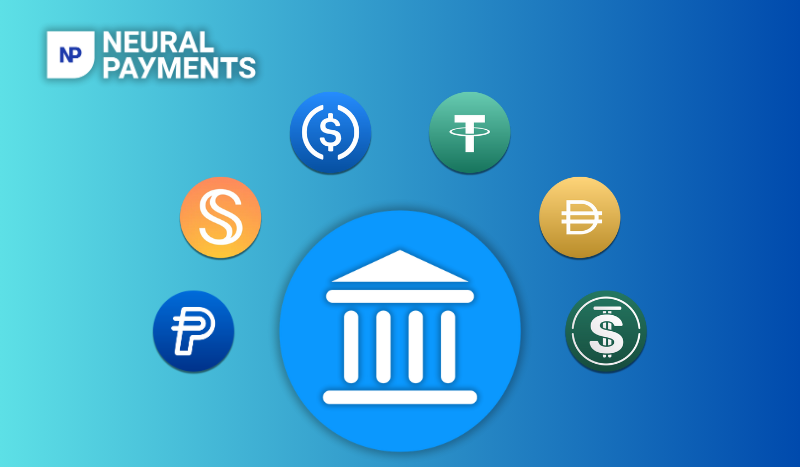P2P Banking: Innovative Strategies to Maximize ROI
Don't settle for standard digital banking tools; find those specifically designed for your consumers’ needs.
What do Banks and Credit Unions need to know about stablecoins? Today we explore where things stand with the recent passing of the GENIUS act, and what Financial Institutions need to know moving forward.

Once viewed as just another crypto gimmick, they're now being seriously considered by regulators, embraced by fintechs, and tested by a growing number of banks. In fact, while newer survey metrics from providers like Fireblocks suggest wide interest, with 49% of their customers reporting usage and 41% planning pilots, real engagement with stablecoin issuance or compliance remains much more limited among traditional financial institutions. As recently as 2023, 85% of banks and credit unions cited regulatory uncertainty as a primary barrier to adoption, implying that fewer than 15% had moved beyond early exploration into active implementation (Fireblocks, 2025 Banking and Stablecoin Survey).
And yet, many banks - especially community and regional institutions in the US - still don’t know what to make of them.
Let’s change that.
At their core, stablecoins are digital tokens pegged to real-world assets like the U.S. dollar and backed by reserves such as cash or short-term Treasuries. They offer the stability of fiat currency with the speed and programmability of blockchain technology (Business Insider).
This makes them distinct from volatile cryptocurrencies like Bitcoin. They’re designed to remain stable in value, hence the name.
Current applications include:
These aren’t speculative assets. They’re infrastructure.
As of mid-2025, the market capitalization of USD-backed stablecoins stands at approximately $217 billion, up over 16% quarter-over-quarter (World Economic Forum). Transaction volumes in 2024 topped $28 trillion, with tokens like Tether (USDT) and USDC holding dominant market share.
At the same time, regulators are catching up:
The signal is clear. Stablecoins are being normalized in regulated finance.
The GENIUS Act has created the framework for institutions – banks and crypto companies – to issue stablecoins, but compliance for stablecoins will look different from business as usual. Institutions need to be prepared to adjust their anti-money laundering (AML) controls.
According to Peter Piatetsky, a former Treasury regulator and the CEO of AML compliance platform Castellum.AI, “Institutions that are exploring licenses to issue stablecoins, whether to serve for payment rails or other functions like treasury services, must adjust their AML compliance risk controls. Real-time compliance monitoring is a need to have, not a nice to have.”
It’s not a question of “if” FIs will encounter stablecoins, but when and how.
For FIs exploring this space, consider the following pragmatic approach:
At Neural Payments, we’re evaluating how stablecoin rails may eventually connect to our real-time payments engine, expanding the ways our partner banks can send money - without sacrificing security, compliance, or control.
As Bernstein analysts recently noted, stablecoins are not likely to replace card-based consumer payments any time soon. Interchange and adoption dynamics are too entrenched (Barron’s). But that misses the bigger point.
Stablecoins may not be the solution for your Starbucks checkout line, but they are increasingly the preferred infrastructure for real-time, cross-network money movement at scale.
Ignoring them may feel safe now. But staying out too long could mean missing the next wave of payments innovation.
We’re here to help our FI partners explore that wave; thoughtfully, securely, and strategically.
Want to learn more about how Neural Payments is changing the payments landscape? Book a demo by following the link here.
Mick Oppy is the visionary co-founder and CEO of Neural Payments, a fintech company transforming the way financial institutions approach digital payments. Starting as an idea of his in an MIT classroom, Neural Payments has introduced a scalable, fraud-protected payments engine that empowers banks and credit unions to offer modern payment solutions without sacrificing control, brand identity, or security.
Peter Piatetsky is the co-founder and CEO of Castellum.AI, the only financial crimes compliance platform with in-house risk data, AML/KYC screening and AI agents. Trusted by community banks, sponsor banks, leading crypto exchanges and financial services firms, Castellum.AI enables compliance teams to scale their operations while maintaining precision, accountability and oversight. For more information, visit Castellum.AI.
Don't settle for standard digital banking tools; find those specifically designed for your consumers’ needs.
Zelle's standalone app is shutting down. Learn how this impacts P2P payments and explore alternative payment platforms to suit your needs.
Discover why banks and credit unions need a flexible, fraud-resistant P2P payment solution as Zelle sunsets its app. Explore Neural Payments for a...
Be the first to know about new products and whats going on in the payments industry by subscribing to the Neural Payments newsletter and blog. We'll notify you when we're launching new products, provide deep insight into the world of payments technology and so much more.